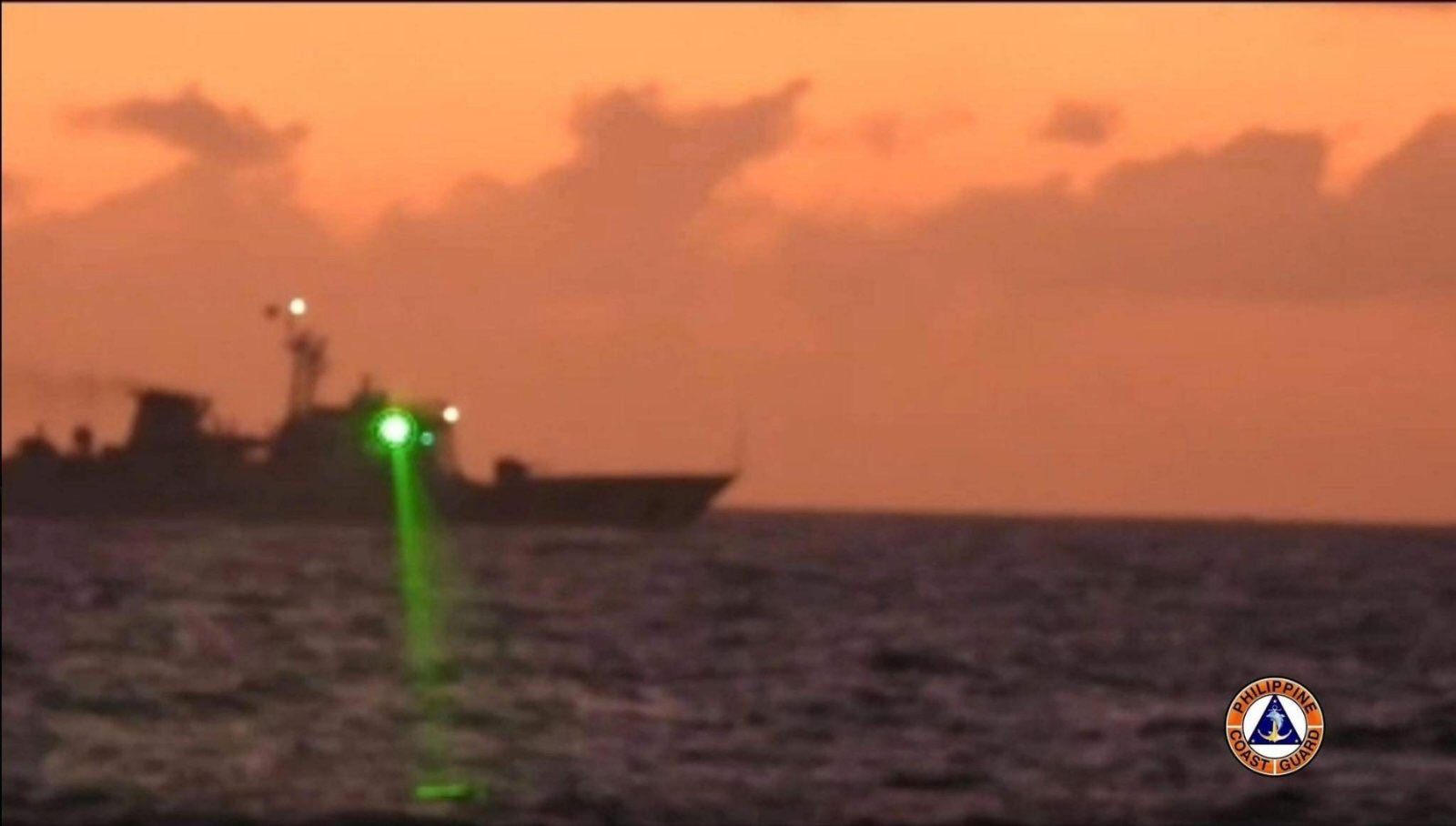SUMMARY
This is AI generated summarization, which may have errors. For context, always refer to the full article.

MANILA, Philippines – The Philippine government on Tuesday, February 14, lodged a diplomatic protest against China after its coast guard vessel aimed a military-grade laser at the BRP Malapascua in the West Philippine Sea.
Department of Foreign Affairs (DFA) Spokesperson Teresita Daza said the protest was sent to the Chinese embassy on Tuesday, a day after the Philippine Coast Guard publicized the incident near Ayungin (Second Thomas) Shoal.
In its protest, the Philippines condemned the “shadowing, harassment, dangerous maneuvers, directing of military-grade laser, and illegal radio challenges by CCG (China Coast Guard) vessel 5205 against PCG vessel BRP Malapascua on 6 February 2023,” the DFA said.
Based on details shared to the media by the PCG, a China Coast Guard vessel with bow number 5205 twice directed a military grade laser-light toward the BRP Malapascua, “causing temporary blindness to her crew at the bridge.”
The PCG ship had been out in the West Philippine Sea supporting a Philippine Navy resupply mission to Ayungin Shoal, where the Philippine Navy’s BRP Sierra Madre is aground as a permanent outpost.
The DFA asserted that China’s actions against the PCG were a threat to the Philippines’ sovereignty and security, adding that it infringed on Manila’s sovereign rights and jurisdiction in its exclusive economic zone (EEZ) in the West Philippine Sea.
Ayungin Shoal, a submerged maritime feature located 167 kilometers from Palawan, is within the Philippines’ EEZ and continental shelf.
The documented incident provides proof of China’s use of lasers in the South China Sea. In February last year, Australia accused Beijing of an “act of intimidation” after a Chinese navy vessel directed a laser at an Australian military surveillance aircraft.
‘Acts of aggression’
On Tuesday, the Philippines also branded China’s actions as “acts of aggression,” and that the CCG’s harassment of the BRP Malapascua was “disturbing and disappointing,” following President Ferdinand Marcos Jr.’s state visit to China last month.
Marcos’ visit to China was his first outside Southeast Asia. The 48-hour trip yielded an agreement to set up a direct communication line between the DFA’s Maritime and Ocean Affairs Office and the Chinese foreign ministry’s Department of Boundary and Ocean Affairs to manage tensions in the volatile waterway.
During his visit to Beijing, Marcos and Chinese President Xi Jinping had agreed to manage the two countries’ maritime issues peacefully, “through diplomacy and dialogue, without resorting to force and intimidation.”
Responding to the incident, China earlier claimed that the BRP Malapascua was “intruding” into its waters without Chinese permission.
Chinese Foreign Ministry Spokesperson Wang Wenbin likewise defended China’s actions, saying the “China Coast Guard ship upheld China’s sovereignty and maritime order and acted in a professional and restrained way.”
The Philippines, not China, had the exclusive privilege of conducting law enforcement activities in its waters, the DFA said.
“China does not have law enforcement rights or powers in and around Ayungin Shoal or any part of the Philippine EEZ,” said Daza.
Restrain forces
The Philippines also called on China to comply with international law and the 2016 Permanent Court of Arbitration ruling, which struck down Beijing’s nine-dash-line as illegal. The ruling, filed and won by the Philippines, also determined that China’s expansive actions were illegal.
“We call on China to comply with its obligations under international law, including the 1982 UNCLOS and the 2016 Award in the South China Sea Arbitration and direct its vessels to cease and desist from its aggressive activities against Philippine vessels,” Daza said.
China has continued to refuse calls from the international community to comply with the ruling, which it considers “invalid.”
In response to the incident, the Philippine military echoed the Department of National Defense’s call on China to exercise restraint.
“I think it’s time the Chinese government restrain its forces so they do not commit any provocative acts that will be endangering lives of people,” said Armed Forces of the Philippines spokesperson Colonel Medel Aguilar. – Rappler.com
Add a comment
How does this make you feel?
![[ANALYSIS] Recent developments in the South China Sea: Perspective from the Philippines](https://www.rappler.com/tachyon/2022/11/TL-South-China-Sea-November-11-2022.jpg?fit=449%2C449)






![[Just Saying] Invoke the Mutual Defense Treaty](https://www.rappler.com/tachyon/2024/06/TL-invoke-mutual-defense-treaty-June-25-2024.jpg?resize=257%2C257&crop_strategy=attention)
![[Rappler’s Best] Divided we fall](https://www.rappler.com/tachyon/2024/06/Divided-we-fall.jpg?resize=257%2C257&crop=363px%2C0px%2C720px%2C720px)



There are no comments yet. Add your comment to start the conversation.